|
In This Issue...
- Research spotlight
- Member Tip: How-to retrieve invoices
- Trending science
- IBRO 2019
- Doing science abroad? Some key points to ponder...
- Member News
- IBNS at SfN 2018
- 28th IBNS conference and upcoming deadlines
Research spotlight
Jean Lud Cadet, MD
Chief, Molecular Neuropsychiatry Research Branch
Chief, Molecular Neuropsychiatry Section
NIH/NIDA Intramural Research Program (IRP)
Baltimore, Maryland, USA
 I had been interested in the practice of internal medicine and cardiology when I was a young man in primary and secondary schools in Haiti. However, all that changed during my second year in medical school when I was first introduced to neuroscience. These new interests were cemented after learning about the roles of dopamine in the pathobiology and clinical manifestations of Parkinson’s disease and Schizophrenic diatheses. I thus pursued residency training in Psychiatry and Neurology in order to learn more about neurological and psychiatric diseases that impact the brain, in general, and the nigrostriatal and mesolimbic dopaminergic systems, more specifically. During my post-residency fellowship at the NIH, I developed and published the ideas that oxidative mechanisms were responsible for the developmental pathology of the schizophrenic syndromes and in the clinical appearance of drug-induced tardive dyskinesias. The time for the idea of a role of toxic radicals in schizophrenia seems to have finally come because several groups have now published important papers testing this idea. I had been interested in the practice of internal medicine and cardiology when I was a young man in primary and secondary schools in Haiti. However, all that changed during my second year in medical school when I was first introduced to neuroscience. These new interests were cemented after learning about the roles of dopamine in the pathobiology and clinical manifestations of Parkinson’s disease and Schizophrenic diatheses. I thus pursued residency training in Psychiatry and Neurology in order to learn more about neurological and psychiatric diseases that impact the brain, in general, and the nigrostriatal and mesolimbic dopaminergic systems, more specifically. During my post-residency fellowship at the NIH, I developed and published the ideas that oxidative mechanisms were responsible for the developmental pathology of the schizophrenic syndromes and in the clinical appearance of drug-induced tardive dyskinesias. The time for the idea of a role of toxic radicals in schizophrenia seems to have finally come because several groups have now published important papers testing this idea.
At NIDA IRP, I was able to show that toxic superoxide radicals were involved in the toxicity of methamphetamine (METH) and MDMA by using transgenic mice that overexpress the enzyme, superoxide dismutase (SOD) that metabolizes superoxide radicals. Our group was the first to use transgenic mice to study toxicity of the amphetamines. We subsequently discovered a role of hydrogen peroxide in METH toxicity. We were also the first ones to show that large doses of METH that cause dopamine depletion in the dorsal striatum can cause neuronal apoptosis in the rodent brain. We proceeded to document a role of members of the Bcl2 family of pro- and anti-death proteins, caspases, and nuclear breakdown in METH-induced apoptosis. SOD transgenic mice were also shown to be protected against these toxic effects of this drug. These documented pathological changes are consistent with observations in neuroimaging and post-mortem studies of human brains.
More recently, we developed a model of compulsive METH taking during self-administration training even in the presence of adverse consequences modeled by contingent footshocks. Interestingly, even after escalating their intake of METH during self-administration training, some rats will either stop or significantly decrease their lever pressing for the drug when shocked; whereas others will continue their lever pressing activities. These behavioral data indicate that escalation of drug intake is not synonymous with addiction. These observations also speak to individual differences as far as resilience and susceptibility to addiction and adverse consequences are concerned. This approach has helped to identify substantial epigenetic and transcriptional differences in the brains of rats dichotomized based on their responses to footshocks. Going forward, we believe that this model might be more clinically relevant than models that use all animals that self-administer a drug as if they represent homogeneous groupings.
We have also begun to investigate the molecular neurobiology of oxycodone self-administration. We recently showed that rats, given 9 hours of access to oxycodone, will escalate their lever pressing behaviors over several weeks. Interestingly, there are animals that will take a lot less oxycodone than others that escalate their intake much more rapidly. Biochemical and molecular studies have also identified significant differences, especially, in the dorsal striatum and hippocampus between these groups. Our ongoing studies will seek to identify specific epigenetic changes that might serve as therapeutic targets against opioid addiction.
Back to Top
Member Tip: How-to retrieve invoices
Eve Van Wagner, IBNS Central Office
Did you know that through your member profile, you are able to to retrieve your payment information at any time? Here's how:
1. Log into your profile
2. Click on My Profile
3. Hover your mouse over the My Profile tab and a drop-down menu will appear. Then, select Invoices
4. Select the invoice you wish to download by clicking on the Invoice ID
5. Print/Save
Back to Top
Interested in serving as a Guest Editor for the IBNS News?
Email: [email protected]
Looking for a New Employment Opportunity or Struggling to Find the Right Candidate? Meet the IBNS Career Center!
One of the biggest challenges for any international scientific society is to provide quality and informative support to its members, whether it's for a new employment opportunity or finding the right candidate for a newly opened position. The IBNS online Career Center portal (http://jobs.ibnsconnect.org) provides the right tools for both job seekers and employers.

The IBNS Career Center portal offers all the standard operational features; such as a thorough search engine by keyword and location, as well as a free review of your resume for feedback, and a job-posting service for employers. However, what makes the IBNS Career Center stand out in terms of support is two additional quality features: resources for job seekers & access to a resume bank for employers.

In the Resources section, you have access to a number of articles with valuable tips in building a resume, job seeking, and communication. These tips come from experienced scientists in the field -- not only for searching or applying for a position, but also for the interview process. Interested in 'building your brand’ or strengthening your social media presence? You will find plenty of advice and tips to do so, which will help strengthen your image and move your career to the direction you want!
In the Resume Bank, potential employers have free access to a large bank of resumes and profiles. You can customize the filters that apply to your search and create lists of candidates that fulfill your own criteria.
Back to Top
Trending science
In this column, we share the latest research, interesting scientific articles and news.
Epilepsy: A first unsuitable anti-epileptic treatment could compromise the effectiveness of a following treatment
Jodi Pawluski, PhD and Benoît Martin, PhD
University of Rennes 1, France
A study conducted by IBNS members Dr. Benoît Martin, Dr. Jodi Pawluski and colleagues at the University of Rennes 1 and University of Grenoble in France suggests that it is essential to take the time to analyze seizure type before prescribing antiepileptic medications, particularly in children. The preclinical study, conducted in mice, was published in the journal Epilepsia (August 2018).
 The study emerged from the story of monozygotic twins who both developed the same epilepsy during childhood. With treatment, one twin was able to manage his disease while the other twin had increased severity of the disease and even today presents symptoms significantly altering his quality of life even with additional treatments. What distinguishes these two brothers? They had received a different first antiepileptic treatment after their diagnosis: one adapted, one inadapted. From this clinical evidence the idea of developing an animal research/study emerged to establish whether the first anti-epileptic treatment can influence the future of the disease and efficacy of additional treatments. The study emerged from the story of monozygotic twins who both developed the same epilepsy during childhood. With treatment, one twin was able to manage his disease while the other twin had increased severity of the disease and even today presents symptoms significantly altering his quality of life even with additional treatments. What distinguishes these two brothers? They had received a different first antiepileptic treatment after their diagnosis: one adapted, one inadapted. From this clinical evidence the idea of developing an animal research/study emerged to establish whether the first anti-epileptic treatment can influence the future of the disease and efficacy of additional treatments.
 Martin and colleagues carried out this translational study using a mouse model of absence epilepsy, a form of the disease that affects 7 children out of 10,000. The mice in the study were treated with different antiepileptic medications for two weeks, appropriate and inapropriate.At the end of these two weeks, the broad spectrum appropriate anti-epileptic drug (sodium valproate - VPA) was administered to all mice for 6 more weeks. Over the entire protocol, the electroencephalographic (EEG) activity of the four groups of mice was recorded to investigate effects of the medications on seizure activity. Martin and colleagues carried out this translational study using a mouse model of absence epilepsy, a form of the disease that affects 7 children out of 10,000. The mice in the study were treated with different antiepileptic medications for two weeks, appropriate and inapropriate.At the end of these two weeks, the broad spectrum appropriate anti-epileptic drug (sodium valproate - VPA) was administered to all mice for 6 more weeks. Over the entire protocol, the electroencephalographic (EEG) activity of the four groups of mice was recorded to investigate effects of the medications on seizure activity.
The results were clear: mice treated from the start with an antiepileptic specific to absence epilepsy (VPA or ESM) showed a decrease progressive number of seizures (as noted by EEG activity). In addition, the mice that received the inappropriate medication (VGB) continued to have high seizure activity, despite the subsequent introduction of an appropriate medication (VPA).
This study supports the hypothesis that the first antiepileptic medications received can have an impact on the evolution of the disease. Thus, following a first seizure, we should take the time to ensure that patients are routinely referred to a service or expert practitioner to conduct all necessary tests to establish the most accurate diagnosis possible, and the most suitable treatment for the patient's form of epilepsy. This is the position that is currently being adopted in the United States, where epileptologists plead for the creation of institutes that would be specifically dedicated to the reception of patients in whom an epileptic illness is suspected. In France, future recommendations concerning care pathways for a person with a first seizure specify that the patient consults a specialist and that an EEG investigation is performed within a maximum of 15 days following this seizure.
[This article was translated and adapted from the publication at on University of Rennes 1 (https://www.univ-rennes1.fr/actualites/epilepsie-un-premier-traitement-inadapte-compromettrait-lefficacite-des-suivants)]
Reference: Long-term negative impact of an inappropriate first antiepileptic medication on the efficacy of a second antiepileptic medication in mice [3] Pawluski JL, Kuchenbuch M, Hadjadj S, Godset G, Costet N, Vercueil L, Biraben A, Martin B
Epilepsia 2018 Jul; 59 (7): e109-e113. DOI: 10.1111 / epi.14454
Source URL: https://www.univ-rennes1.fr/actualites/epilepsie-a-first-treatment-inadapt-compromises-effectiveness-of-next
Back to Top
IBRO 2019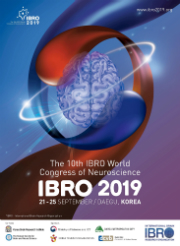
Mark your calendars for the 10th IBRO World Congress in Daegu, South Korea, from 21-25 September 2019. Hosted by the Korea Brain Research Institute (KBRI) and the Korean Society of Brain and Neural Science (KSBNS), the next Congress will represent the best neuroscience worldwide supported by strong inter-regional cooperation.
See more information >>
Back to Top
Doing science abroad? Some key points to ponder...
Jodi Pawluski, PhD
University of Rennes 1, France
Twitter @JodiPawluski
 I’ve had the fortunate experience of doing behavioral neuroscience research for extended periods of time in 4 countries (Canada (my native country), The Netherlands, USA, and France) and for shorter periods in two others (Belgium and Portugal). Moving out of country for research has been a great experience and I highly recommend it, but there are a few things I wish I knew beforehand to make the transition smoother. I’ve had the fortunate experience of doing behavioral neuroscience research for extended periods of time in 4 countries (Canada (my native country), The Netherlands, USA, and France) and for shorter periods in two others (Belgium and Portugal). Moving out of country for research has been a great experience and I highly recommend it, but there are a few things I wish I knew beforehand to make the transition smoother.
1. Ethics. Find out if the project you will be working on has ethical approval and if not figure out how to get your project approved. In some cases this can take months, so it is best to have a conversation about ethics before you hop on a plane to start the next phase of your career. If you do have to write and submit your own ethics, ask a colleague for an example. This can save a lot of time.
2. Certification to work with animals. Certification to work with animals in one country rarely directly transfers to certification in another country. So be prepared. Bring details about the animal care courses that you’ve done, the certificate you’ve obtained as well as a list of the techniques you’ve been trained to do and the amount of time you have worked with animals. This can be very valuable and save time - You may just have to take the courses pertaining to the legalities of working with animals in the given country.
3. Certification to work with chemicals and radioactive materials. Chemical safety training is necessary in some but not all places so find out what you need to do to carry out the research you are planning. The same goes for authorization to work with radioactive substances, have your paperwork in order and cross your fingers that further training is not necessary.
4. Be creative, adaptable, flexible, organized. Sometimes you will not be able to do things the way you wanted or expected to because of ethics, facilities, equipment, vacation periods, etc. Be creative and adapt. And make sure to plan ahead so you have time to solve these challenges. For example, find out if the equipment you need exists in another department, another university close by, etc. Sometimes persisting is the only way to go.
5. Language. Take a class, even to know the basics. Most people in science speak English but it is always nice to know a bit of the native language. Usually there will be free classes available at your university so check them out. This is also a great way to meet other expats.
6. Culture. Embrace it. Enjoy it. It will affect every aspect of your life abroad – from work hours, lunch hours, meeting times, paper work, food, transport etc. From my experience the further south you are in Europe the later the work day starts, the later and longer the lunch hour is…. Also note when national vacation days are and make sure you have building access if need be.
At the end of the day, do your science, see some sites, eat good food and build collaborations that will likely last a lifetime.
Back to Top

Member News
IBNS Central Office
We are pleased to announce Leah Truckenbrod as the IBNS 2018 Best Video Award winner!
After the IBNS meeting in Boca Raton, Leah submitted her video by the posted deadline and ended up winner -- receiving 3-year FREE IBNS membership!
Watch Leah's video and be sure to congratulate her on her prize and hard work!
Thanks, Leah!
Back to Top
IBNS at SfN 2018
Eve Van Wagner, IBNS Central Office
The IBNS was in San Diego, California for the 2018 Society for Neuroscience (SfN) annual meeting.
IBNS had hundreds of guests at our (un)booth - most of whom were eager to discuss the 2019 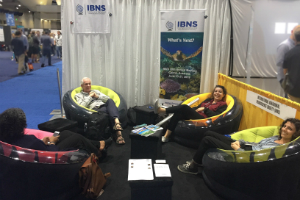 Annual Meeting in Cairns, Australia and IBNS awards. Also, our (un)booth was quite popular for those just looking to relax and being able to meet and network with IBNS members. Annual Meeting in Cairns, Australia and IBNS awards. Also, our (un)booth was quite popular for those just looking to relax and being able to meet and network with IBNS members.
The IBNS reception was a hit at the Grand Hyatt. Many guests came wearing the IBNS Cairns sunglasses and/or clip-on koalas that were given at the 2018 meeting as well as the (un)booth. We welcomed many long-standing members of IBNS as well as new friends and potential members!
Thank you to everyone who stopped by to say hello and to those that stopped to network with other attendees! We value your dedication and involvement within the IBNS family.
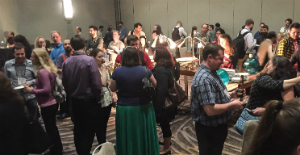 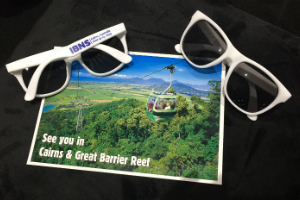
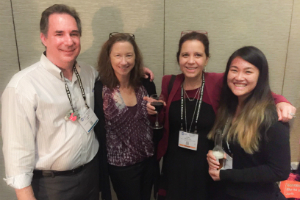 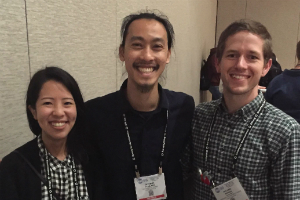
 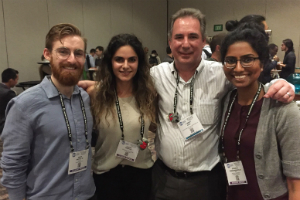
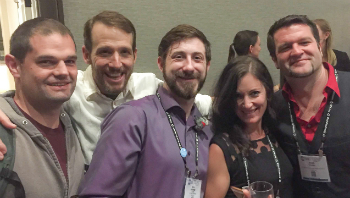
Back to Top
28th Annual IBNS Conference and Upcoming Deadlines
Save the date for this must-attend event! June 23 - 27, 2018, the 28th Annual IBNS Meeting is in Cairns, Australia.
Upcoming deadlines:
January 15, 2019: Travel Award Notifications
February 1, 2019: Abstract Submissions Due
June 23-27, 2019: Conference Dates

Be sure to keep checking the IBNS 2019 meeting page for frequent updates.
Back to Top
|